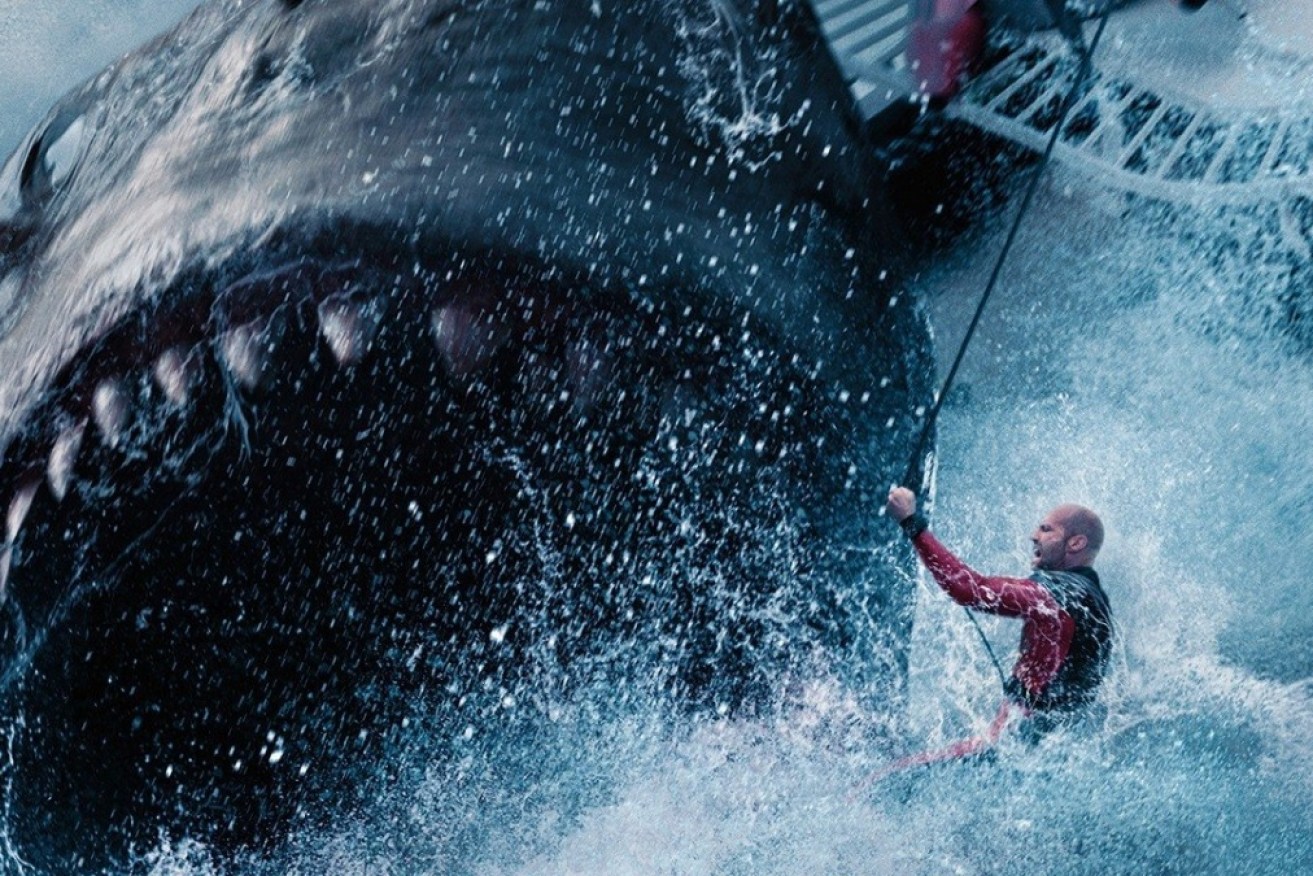The Meg bites big at the box office, but the facts don’t float


It's true megalodon, at 17 metres long, dwarfs Jaws, the great white. But not much else is accurate. Photo: Warner Bros
Biting off a monstrous $US147 million at the global box office and a tasty $45 million at home, Jason Statham-led prehistoric shark attack movie The Meg has eviscerated expectations.
Joined by Chinese megastar Li Bingbing and Australia’s Ruby Rose, they play scientists and deep-sea divers set against an enormous megalodon – or dinoshark – unleashed from beyond the known depths of the ocean.
Audiences have been obsessed with giant sharks since John Williams’ chilling tuba score released the great white beast in Steven Spielberg’s 1975 classic Jaws.

Jason Statham is the only big star (apart from the shark), although Li Bingbing may be known to Western audiences through Resident Evil and Transformers. Photo: Warner Bros
Never surpassed, shark movies have taken regular bites out of the box office since, including three Jaws sequels, post-Spielberg, recent Blake Lively thriller The Shallows and the increasingly ridiculous Sharknado franchise.
Sure, The Meg could be starrier, scarier and/or funnier, but it is a rollicking adventure kept afloat by Statham’s muscular charisma. What is sunk without trace is scientific fact.
The New Daily ran a few of the film’s fishiest facts by Flinders University palaeontology professor John Long. He’s been obsessed with the megalodon since his fossil-collecting days as a boy on the beaches of Melbourne’s Beaumaris.
“I remember looking at books on prehistoric life on earth and seeing these amazing jaws with a man sitting in them,” Professor Long says. “The fact that we had a giant killer shark that was the size of a bus, you know, you never forget that.”
The leviathan grew up to 17 metres in length (compared to 6.4 metres for a great white) baring terrifying teeth up to 18 centimetres that chomped harder than a T-Rex.
What it did not do was live in the darkest depth of the ocean as shown in The Meg.
“This is clearly fiction, because a giant top-end predator like that with serrated teeth clearly hunts food with big chunks of flesh, so mammals,” Long says. “The meg would have mainly hunted in the top few hundred metres of water.”

See that grey thing in the water? Yep, that’s the meg. Photo: Warner Bros
Baleen whales would have been their most likely target.
What of the ecosystem supported by volcanic vents the film reveals?
“You do get deep sea trenches with volcanic lava and hot smokers that create micro environments based on sulphur bacteria, but they wouldn’t support a creature the size of a meg.”
What of the great speed with which the beast surfaces from 30,000 feet?
“Because of the decompression, the thing would explode,” Long says. “Sharks don’t have a swim bladder like typical bony fish. They have fat-filled livers and that’s how they get buoyancy in the water. In order for that to work, they have to be at a particular level in a water column and tend to inhabit that pretty consistently.”

Don’t worry, there’s no chance you’ll encounter a meg when you’re out water skiing. Photo: Warner Bros
With fossil evidence suggesting the megs died out around 2.6 million years ago, what are the chances a few could have survived?
“If megs were around until recent historic times we would have known,” Long says. “They would have been feeding on whales, which were a rich source of oils, meat and cartilage for humans in the 17th and 18th centuries, so they would have been hunted too.”
Despite all these inaccuracies, Long can’t wait to watch the movie, just as he devoured the recent Jurassic World films.
“Any films that bring back prehistoric creatures in an almost-believable fashion thrill me to bits. I’ll be loving The Meg just for the scenes that show it reconstructed, even if I don’t think it would have looked like a great white.”
Meg palaeontology is hotly debated, Long says, but the general consensus is that they’re much more closely related to porbeagle and mako sharks.
“The comparison to great whites is so far from the truth, it’s just funny.”








